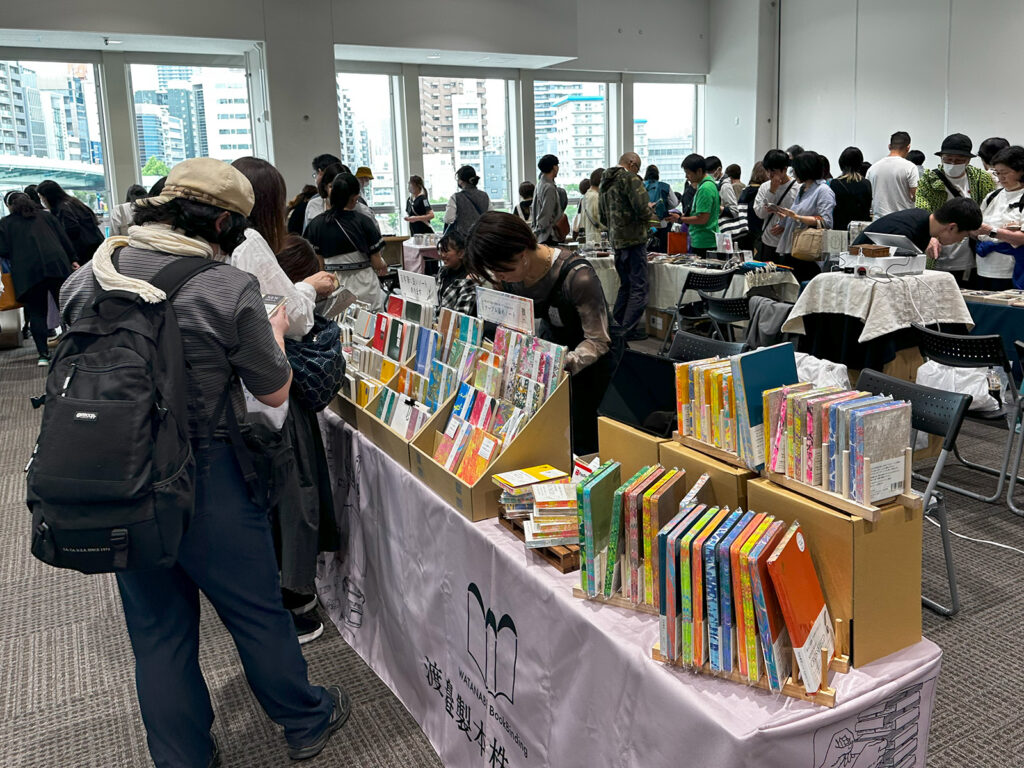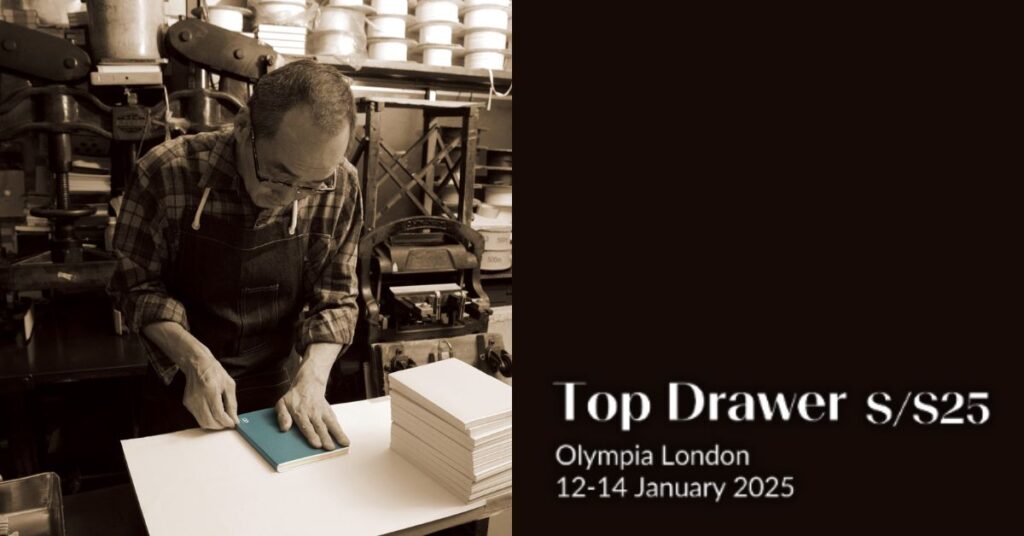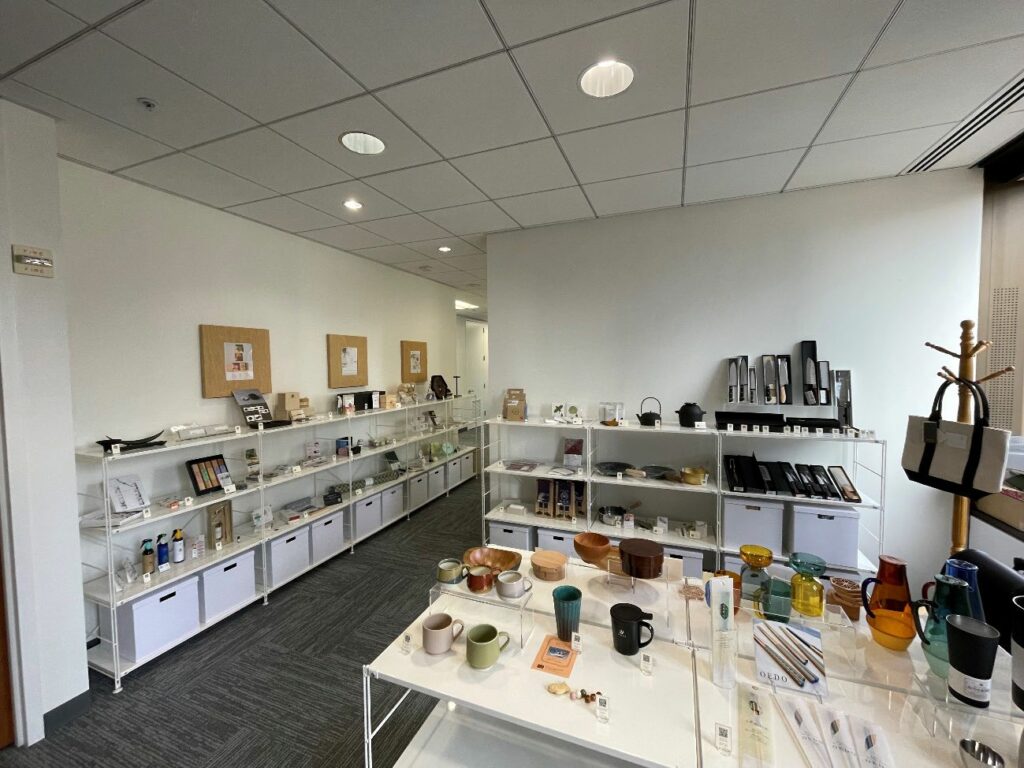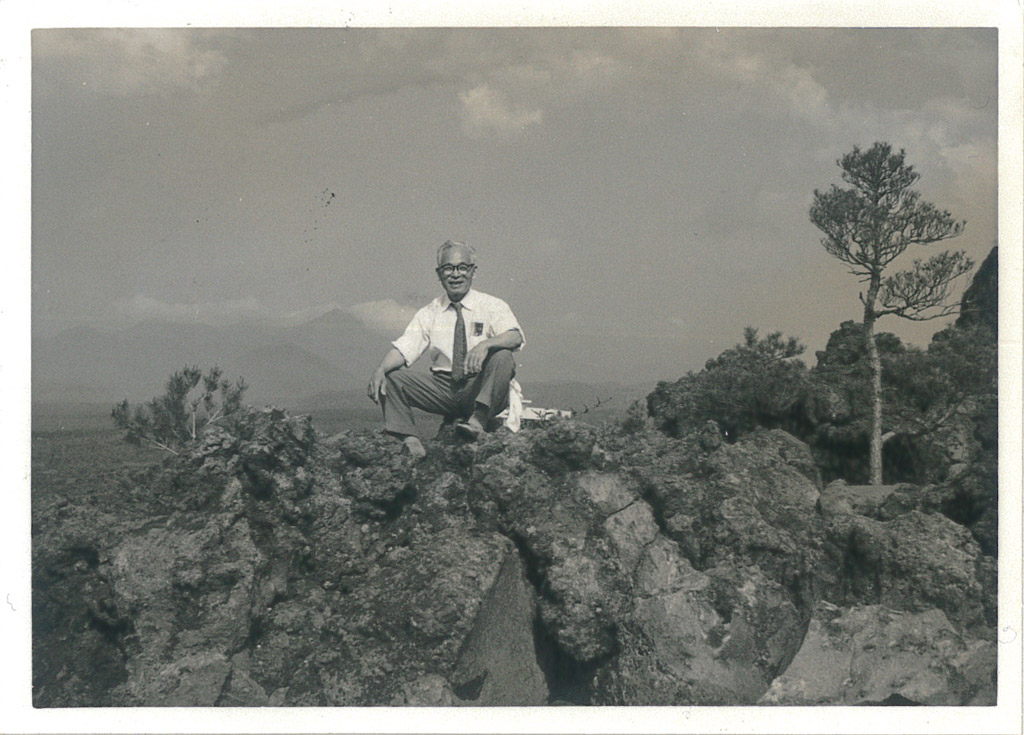 July 08, 2022 |
July 08, 2022 |
The current president of WATANABE BOOKBINDING is the third generation of the company.
In this issue, we would like to talk about the history of the company and its founder, Yoshikichi Watanabe.
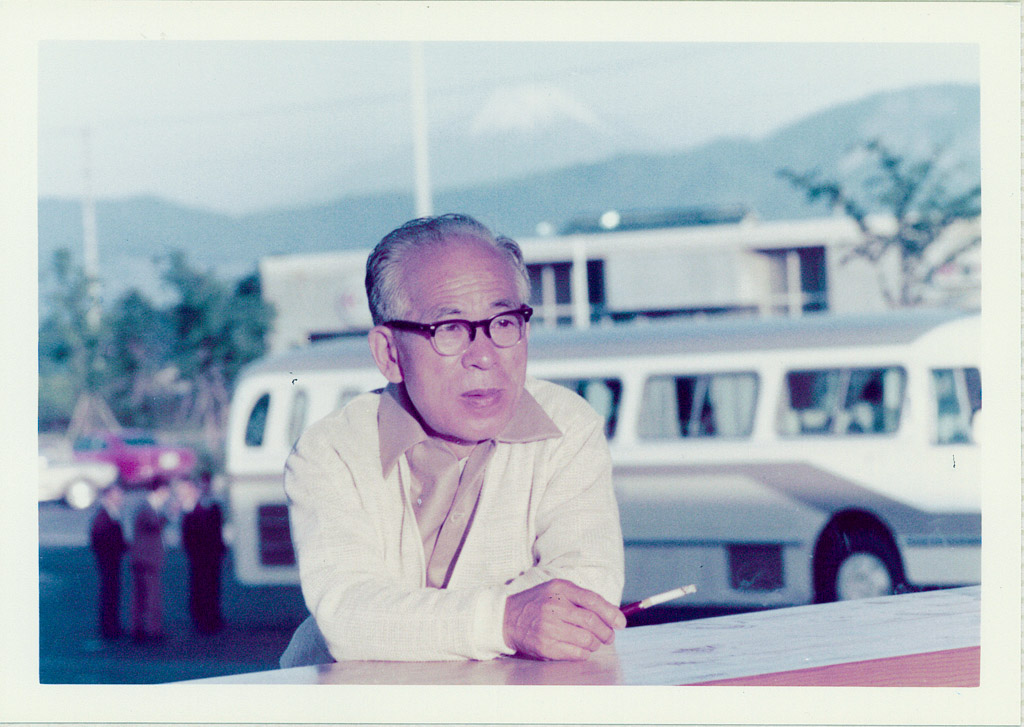
Yoshikichi Watanabe was born in the Meiji era (1868-1912). It is said that Yoshikichi started his career as a bookbinder when he was only 9 years old. He moved to Tokyo from Tohoku Sendai and started working at an acquaintance’s bookbindery as a live-in worker.
After gaining training, his dexterity and enthusiasm were recognized, and he became the plant manager of the bookbindery.
During World War II, Yoshikichi and his family stayed at the bindery while his employer’s family was evacuated.
After the end of World War II, the publishing industry was in turmoil. The publishing houses that had been his clients were planning to start their activities again, and the reopening of the bookbinders was eagerly awaited. Yoshikichi was the one who came to the rescue.
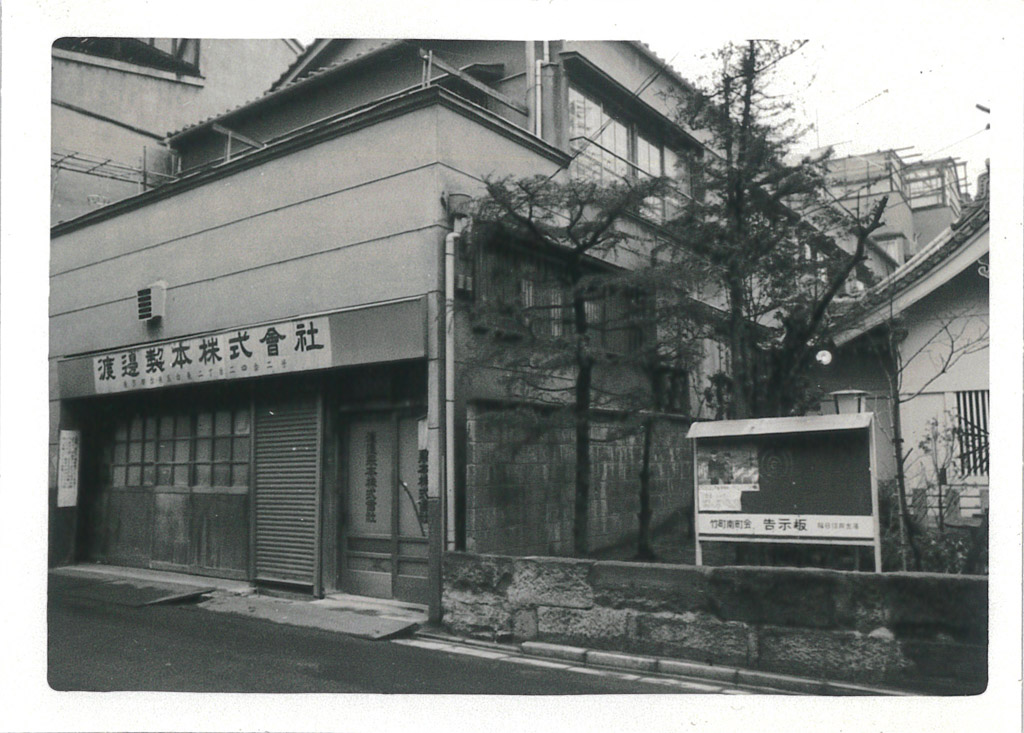
At the time, Yoshikichi had no intention of starting his own bookbinding workshop, nor did he have the funds to do so, but thanks to the enthusiastic persuasion and support of a client publisher who was impressed by his skills and careful work, he was able to establish Watanabe Bookbinding in 1946 in Shitaya-ku, Tokyo (now Taito-ku, Tokyo).
In the early days of the company, he did not have all the necessary machinery for bookbinding, so, he went to his friend’s bookbindery to have the paper cut, and with the help of his acquaintances, he was able to set up the machines one by one.
Some of the machines are still in use at the factory. They are not from the time of the company’s founding, but they are definitely machines that have been in use since the company’s first generation.

Although there are newer machines than these, they are very useful in our work, which specializes in special binding of books, such as books that are too thin or too large, or when we have to wrap the cover around the body of the book by brush.
In particular, the Heating&double pressing Machine shown in the photo above left is indispensable for our notebook production.
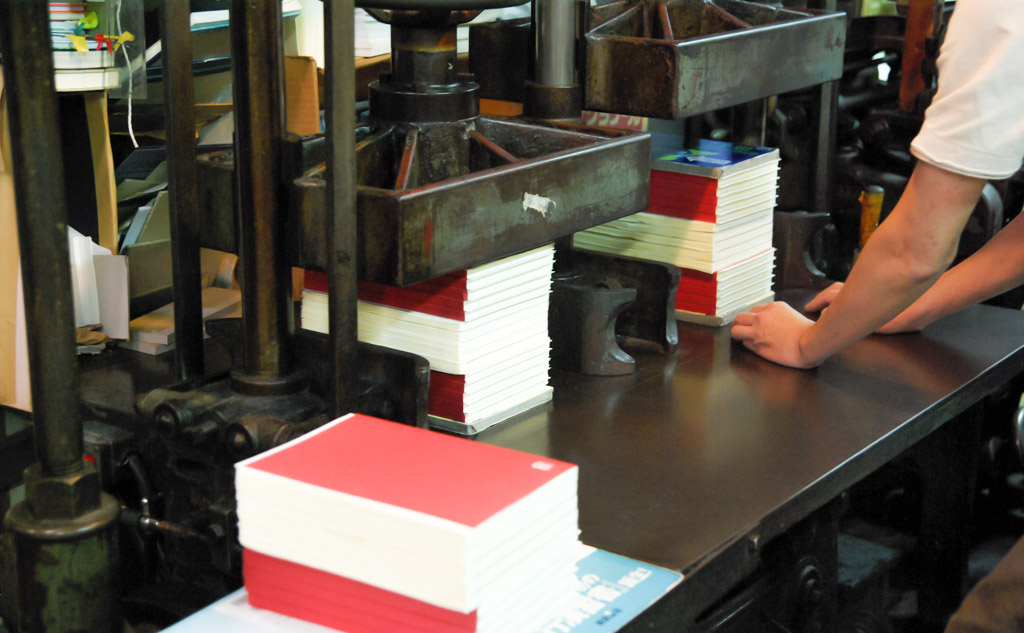
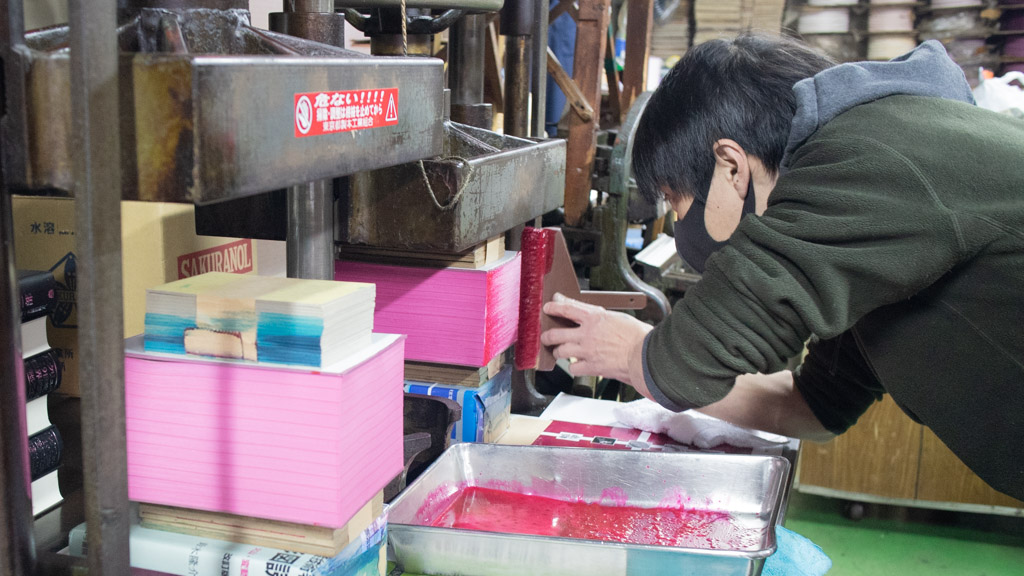
We also use it in our original notebooks such as BOOK NOTE and Seven Seas CROSSFIELD, as well as in coloring the body of NÚtta.
Yoshikichi was about 150 cm tall and very petite, but he had a dynamic personality.
When he stopped by a store on his way out of town and liked a product, he would say.
I want to buy everything on this shelf from right to left.
(Sendai’s sasa-kamaboko, a fish paste made from bamboo grass). (A story about a sasa-kamaboko (bamboo fish cake) shop in Sendai and a service area store on the expressway)
He was also a crafty person who made everything by himself.
The dolly here shows the energy hidden in his small body. These were all handmade by the first generation.
They are still used every day to load and move pre-bound materials and finished books.
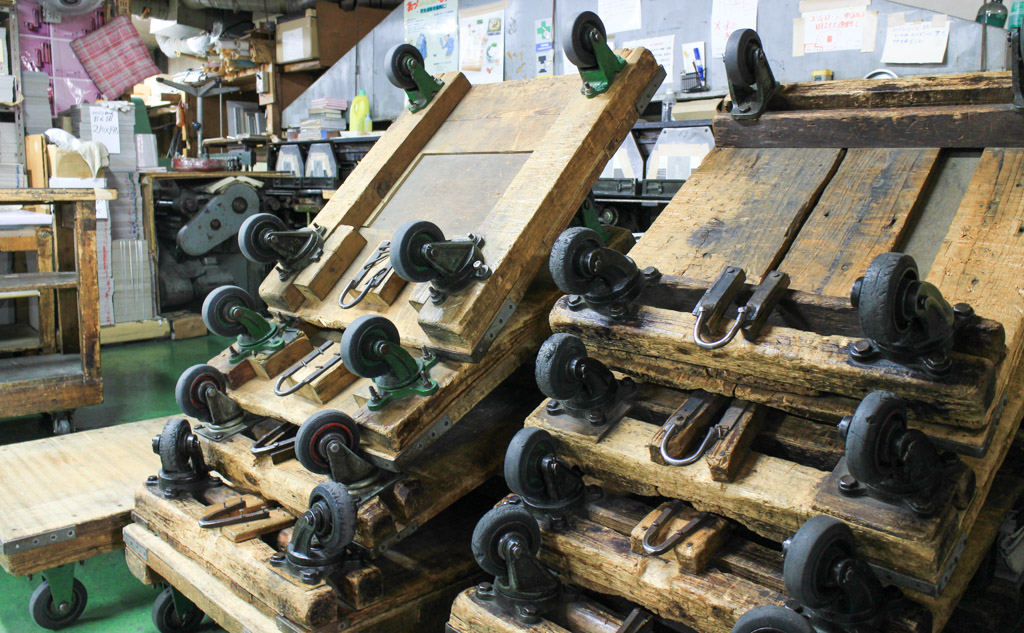
The wooden shelves in the factory were also built by the first generation. He was very good not only at making books but also at carpentry work.
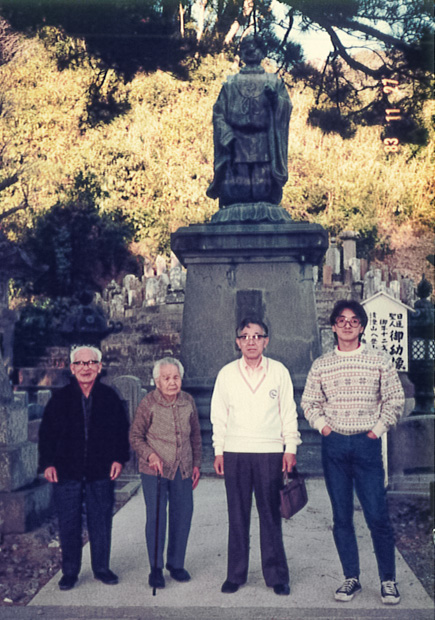
The first generation was always smiling.
The “treasures” inherited from previous generations are not only old machines and tools. The handwork techniques and spirits that successive generations of craftsmen have passed on to their junior craftsmen are also among them.
We believe that it is precisely because we have cherished these treasures that our company’s original products have been born.
What we have always valued and still value today is “beautiful tailoring and strong book making.
We believe that we must continue to carefully carry on this tradition, and we believe that this is the basic philosophy of our company.

